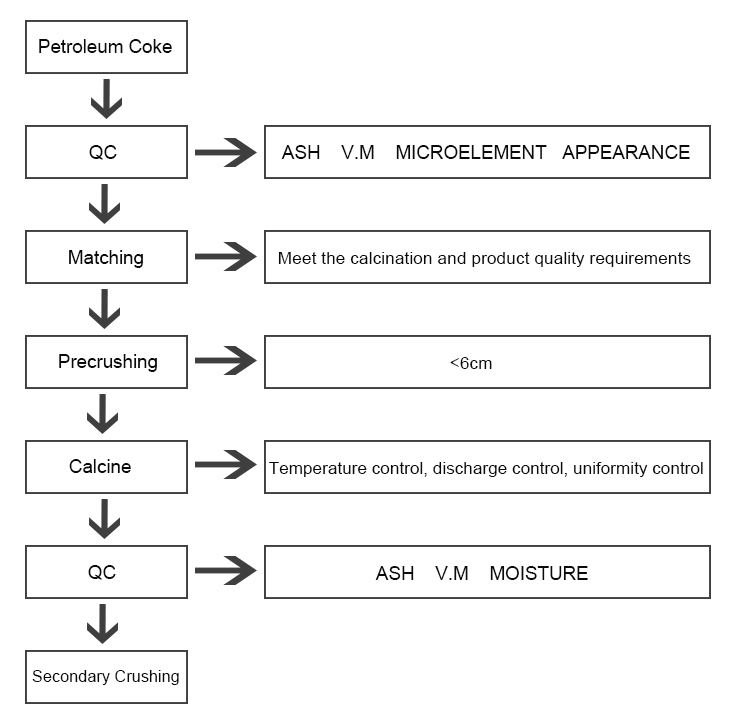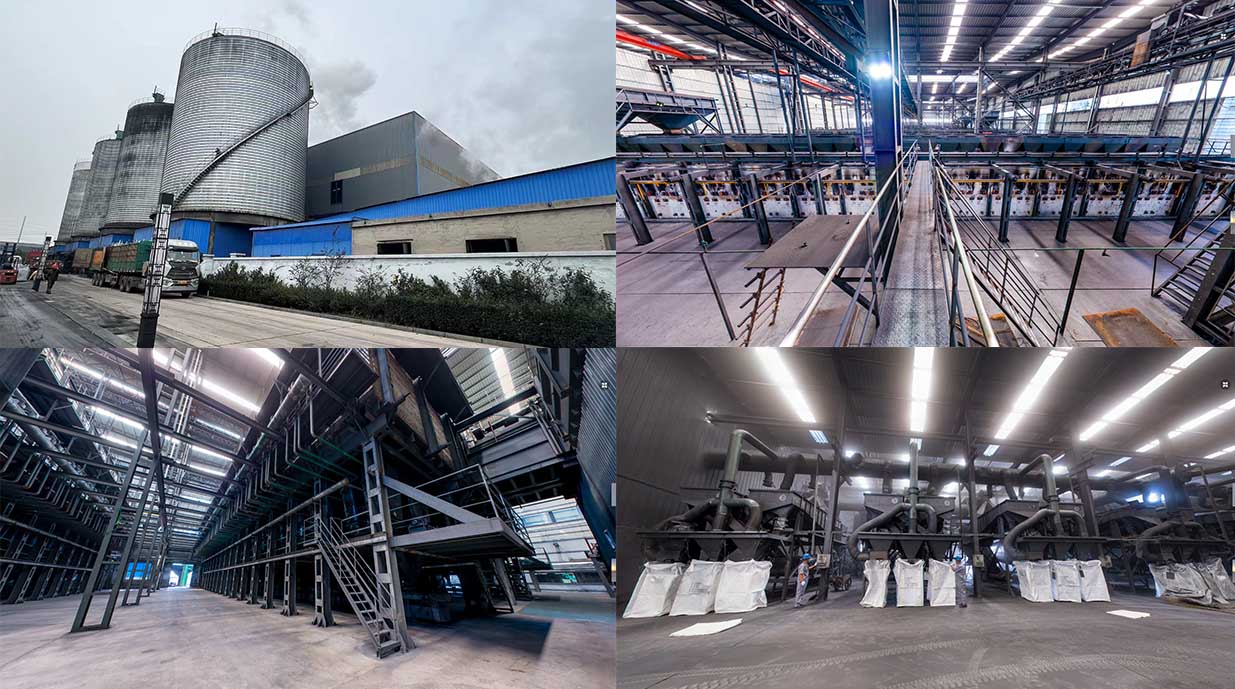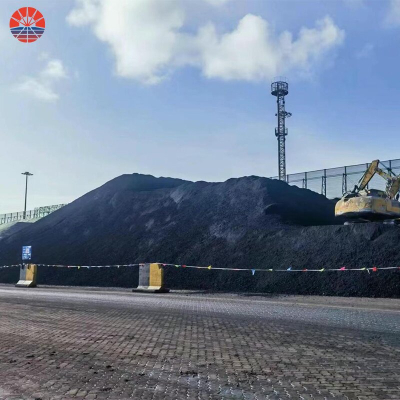The Usage Of Calcined Coke
Calcined coke plays a crucial role in the production of graphite electrodes, which are essential components used in electric arc furnaces for the production of steel and other metals. The benefits of using calcined coke in graphite electrode production include:
High carbon content: Calcined coke has a high carbon content, typically ranging from 98% to 99.5% or higher. This high carbon content is essential for the production of graphite electrodes, as it provides the necessary conductivity and heat resistance required during the electric arc furnace (EAF) process.
Low electrical resistivity: Calcined coke's low electrical resistivity allows it to conduct electricity efficiently during the EAF process. Graphite electrodes made from high-quality calcined coke ensure a stable and effective electric arc, enabling the melting and refining of steel and other metals.
High thermal conductivity: Graphite electrodes derived from calcined coke have excellent thermal conductivity, which means they can withstand high temperatures and intense heat generated during the EAF process. This property is crucial for preventing thermal damage to the electrodes and ensuring a longer electrode service life.
Low coefficient of thermal expansion: Calcined coke-based graphite electrodes exhibit a low coefficient of thermal expansion. This characteristic allows the electrodes to maintain their structural integrity and dimensional stability even when subjected to rapid changes in temperature during EAF operations.
Consistent quality: Manufacturers carefully control the production process of calcined coke to ensure consistent quality. This consistency in raw material quality results in graphite electrodes with uniform properties, making them reliable and predictable during EAF operations.
Reduced breakage and spalling: The high purity and controlled manufacturing process of calcined coke-based graphite electrodes reduce the likelihood of breakage and spalling during use. This contributes to improved safety, reduced downtime, and increased productivity in steelmaking operations.
Low impurity levels: Calcined coke used in graphite electrode production typically has low impurity levels, such as sulfur, nitrogen, and metals. Low impurity content helps prevent contamination of the molten steel during the EAF process, ensuring high-quality steel production.
Longer electrode life: Graphite electrodes made from high-quality calcined coke can have a longer service life in EAF operations. This leads to reduced electrode consumption and replacement costs, resulting in overall cost savings for steel manufacturers.
Recycling opportunities: Similar to its use in aluminum production, calcined coke is often derived from petroleum coke, a byproduct of oil refining. Utilizing calcined coke in graphite electrode production helps recycle this byproduct, promoting sustainability in the steelmaking industry.
In summary, the use of calcined coke in the production of graphite electrodes offers numerous benefits, including high carbon content, low electrical resistivity, excellent thermal conductivity, dimensional stability, and reduced impurities. These advantages contribute to the efficiency, cost-effectiveness, and sustainability of the electric arc furnace process for steelmaking.
Advantage to using Calcined Petroleum Coke in graphite electrode
Carbon Content: Graphite electrodes are made predominantly from CPC due to its high carbon content. The carbon in CPC acts as the conductive material in graphite electrodes, enabling the transfer of electrical energy to the EAF. Graphite electrodes are essential components for EAFs, which are used in the production of steel. The high carbon content of CPC ensures efficient electrical conductivity and energy transfer during the steelmaking process.
Binder Material: Calcined petroleum coke serves as the main component and binder material in the manufacturing of graphite electrodes. It is mixed with other materials such as coal tar pitch to form a paste-like mixture, which is then extruded or molded into the desired electrode shape. The CPC acts as a structural filler and provides cohesiveness to the electrode material, allowing it to retain its shape during the production process and withstand the rigorous conditions of EAF operation.
Thermal Conductivity and Resistance: Calcined petroleum coke has excellent thermal conductivity, which is an essential characteristic for graphite electrodes. During the steelmaking process, intense heat is generated within the EAF, and the graphite electrodes need to efficiently transfer and distribute this heat to the steel bath. The high thermal conductivity of CPC ensures effective heat transfer and minimizes temperature variations within the furnace.
Mechanical Strength and Electrical Resistance: The calcination process enhances the mechanical strength and electrical resistance of CPC. These properties are crucial for graphite electrodes, as they need to withstand the mechanical stresses and resist breakage during operation. Additionally, the electrical resistance of the electrodes determines the amount of current that passes through them. The controlled electrical resistance of CPC-based graphite electrodes allows for precise and efficient power input to the EAF.
It's important to note that the quality and specifications of the calcined petroleum coke used for graphite electrode production can vary based on the specific requirements of the steel industry, electrode manufacturers, and EAF operation parameters.










